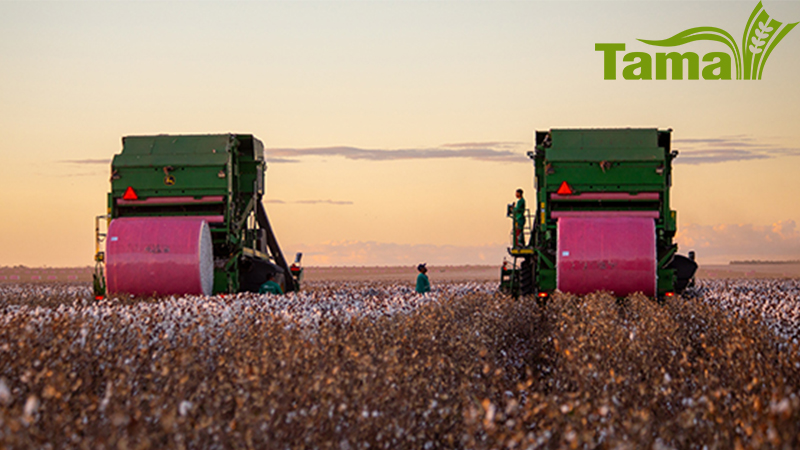Range-Bound Prices and Textile Trade Deficits
Mill buying slammed the door shut on cotton’s price advance at the 64 cent mark, as prices retreated to the 62 cent level, basis the spot market July contract.
With just over a month of trading left before old crop enters the history books, the five cent 61-66 cent trading range remains firmly entrenched. Speculators spent the final two days of the week probing the downside support between 61 and 62 cents, but backed off as decent mill business was uncovered. The new crop December contract did climb to its highest level since the first week in January – 63.56 cents – but lost ground the remainder of the week.
Chinese reserve offerings were as expected, as some two-thirds were U.S. and Australian Good and Strict Middling types as had been advertised. Essentially all of the Chinese stocks offered by the government were sold. U.S. exports sales lagged, but shipments continued at an excellent pace. The five cent trading range shows all prospects of holding through the June time period.
The market uncovered little, if any, impactful news on the week. The Chinese sales finally came online and, true to the announced plans, imported cotton was the highlight of the sale. The government confirmed that 99.6% of the offered cotton was sold, with 80% being imported high grades and the remaining 20% being domestic production. The imported U.S. and Australian offerings were fully subscribed –some 72,400 metric tons (1 metric ton equals 4.593 statistical bales) – and some 17,900mt of domestic cotton were sold.
The mills’ response to the sale confirmed the immediate delivery needs of Chinese mills and the hand-to-mouth import buying that has been in place for some time. It is believed that the sales of imported cotton represented only about 10% of imported stocks held by China, and that imported cotton will continue as the feature of the upcoming weekly offerings.
As previously announced by the Chinese, their plan is to ensure adequate offerings of high grades until the new crop Xinjiang crop becomes available, expected to be in the September-October time frame. Essentially, the only high grade cotton held in the reserve stock is of U.S. and Australian origin.
Weekly U.S. export sales – impacted by the prior week’s price averaging above 63 cents – were less than impressive, but did represent a measurable increase above the prior week when prices were flirting with 64 cents and above. Net sales of upland cotton totaled 61,300 RB, with Brazil, China and Pakistan representing the primary buyers. Again, the disappointing Brazilian crop yields showed in that it was the leading buyer followed by China and Pakistan. Sales of 24,800 RB were made for 2016-17 delivery.
Exports continued their impressive two-month run with 277,600 RB of Upland shipped, with Turkey, Vietnam and Mexico being the primary destinations. Weekly Pima sales were 11,400 RB, led by India, China and Pakistan. Export shipments were 12,000 RB.
Of growing concern, however, is the increasing U.S. imports of denim coming from China. Just as U. S. consumer demand for denim is finally beginning to register a slight increase, China is beginning to replace Mexico as the primary source of imported blue denim into the U.S. market. The reality is that raw cotton U.S. exports to Mexico that return to the U.S. as denim are being replaced by denim imports from China that have been manufactured mostly from Chinese-grown cotton – at a time when China has stated it will limit U.S. cotton imports.
Granted, I am a free-trader. After all, I have an “I am smart degree” in economics. Yet, U.S. cotton appears to have been abandoned by the international trade desk in Washington. The trade deficit in cotton fiber, textiles and apparel has reached a record level, and the U.S. has been silent.
China exported $3.4 billion worth of textiles and apparel to the U.S. in February. This was a growth of over $500 million from a year ago and was up 17.5%. It is clear that the U.S. has allowed record world subsidies by China to go unchallenged. U.S. textile and apparel imports expanded 14% in February, reaching $9.2 billion. China had a 37% market share. The February growth in shipments to the U.S. in volume grew by 23%. This means one out of every three garments purchased in the U.S. came from China.
Evidence is also surfacing that non-textile producing countries are exporting cotton textile products to the U.S. Such begs the question – how does a country without a textile industry export textile products to the U.S? That is, I wonder where the imported product was actually manufactured.
The trading range continues, absent an unusual announcement from Mother Nature.
Give a gift of cotton today.









